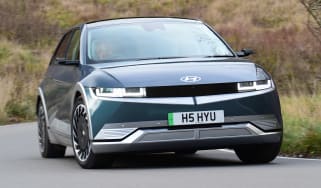Circuit breakers
The best way to avoid electrocution in the garage is to link your power tools to a circuit breaker. We pick from eight
Life would be a lot tougher without electricity, and nowhere is this more true than in the workshop. Overhead lights make it possible to work all year round and a lead lamp provides illumination in awkward corners. Power tools, including drills, grinders and heaters, take the sweat out of even major repairs, while larger kit, such as compressors and welders, can turn the most humble workshop into a semi-professional set-up.
But there are drawbacks; garages are notoriously damp places, and electricity and water tend not to get on. Factor in all the different fluids used to keep a car well maintained, and it becomes clear that great care is required to avoid a serious accident. All electrical products are fused, but by the time the fuse has been tripped, the user might well have received a fatal electric shock. The reason for this is that fuses are designed largely to protect the tool or appliance, rather than any person in contact with it. So all electrical equipment should be connected to the mains via a plug-in residual current detector - or RCD - adaptor.
These inexpensive lifesavers monitor the current in the live and neutral wires of any tool, which should be the same. If this balance is disturbed - that is, when residual current is present in the tool due to a fault or short - the RCD adaptor cuts the power very quickly, reducing the risk of electrocution. All the circuit breakers we've tested claim to act within 40 milliseconds, although most respond twice as fast. Even if you have an RCD, it's important to try it every time you use it by simply pressing the 'test' button, then hitting 'reset'.
By using specialist test equipment and with the help of expert electrician Paul Edwards, we deliberately overloaded the RCDs and timed how long they took to cut off power.
To ensure there was no tripping without reason, we plugged a 600W drill into each device, and ran it for two minutes.
Finally, we looked at the design, noting where the reset switch was located. Ideally, it should be on the rear of the unit, to encourage users to look for the trip's cause, rather than just hit the button.
Verdict
In terms of speed, the Masterplug came out on top. Even if it was more expensive, it would still win on safety grounds.
Second was the PowerBreaker. It was slower to cut off power, but had a neater design, plus a clearer on/off window.
Third place went to the B&Q adaptor, which beat the Homebase Essentials offering by virtue of its quicker reaction time.


